AK7
-
Official Full Name
adenylate kinase 7 -
Synonyms
AK7;adenylate kinase 7;FLJ32864;putative adenylate kinase 7
| Cat.# | Product name | Source (Host) | Species | Tag | Protein Length | Price |
|---|---|---|---|---|---|---|
| AK7-394H | Recombinant Human AK7 Protein, GST-tagged | Wheat Germ | Human | GST |
|
|
| AK7-43HCL | Recombinant Human AK7 cell lysate | Human | Non |
|
||
| AK7-1236H | Recombinant Human AK7 protein, His&Myc-tagged | E.coli | Human | His&Myc | 1-723aa |
|
| AK7-1340HF | Recombinant Full Length Human AK7 Protein, GST-tagged | In Vitro Cell Free System | Human | GST | Full L. 656 amino acids |
|
| AK7-3632H | Recombinant Human AK7 protein, His-tagged | Yeast | Human | His | 1-723aa |
|
| AK7-8372H | Recombinant Human AK7 protein(1-723aa), His-tagged | Insect Cells | Human | His | 1-723aa |
|
Background
What is AK7 protein?
AK7 gene (adenylate kinase 7) is a protein coding gene which situated on the long arm of chromosome 14 at locus 14q32. AK7 protein is an enzyme that plays an important role in cells and is a member of the adenylate kinase family. It is mainly involved in the intracellular energy metabolism process and helps maintain the balance between ATP, ADP and AMP in the cell through reversible phosphorylation reactions, which is essential for the energy homeostasis of the cell. AK7 plays a role in a variety of biological processes, including cell proliferation, differentiation, and cell signaling. Abnormal expression of AK7 is associated with a variety of diseases. The AK7 protein is consisted of 723 amino acids and AK7 molecular weight is approximately 82. kDa.
What is the function of AK7 protein?
AK7 is localized primarily in the cytoplasm and helps regulate energy supply and demand within cells. The AK7 protein is a key intracellular enzyme responsible for catalyzing the phosphorylation and dephosphorylation of adenylate, thereby maintaining the balance between ATP, ADP, and AMP, and is essential for cellular energy metabolism. It plays a role in cell proliferation, differentiation, and signaling, and changes in its expression levels have been linked to a variety of diseases, including cancer and male infertility. The abnormal activity of AK7 may affect cell survival and function, making it an important biomarker and potential therapeutic target.
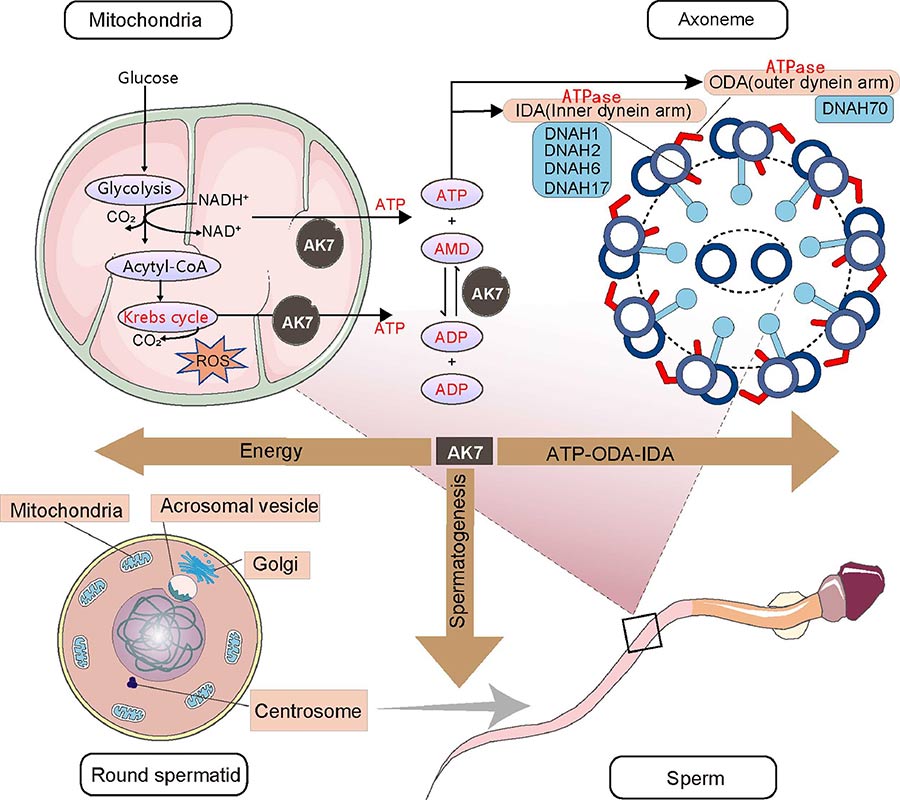
Fig1. Working hypothesis for the role of AK7 in spermatogenesis and energy conversion. (Tianli Chang, 2024)
AK7 related signaling pathway
Through its kinase activity, AK7 influences intracellular conversion between ATP, ADP, and AMP, thereby participating in cellular metabolic processes. Gene set enrichment analysis (GSEA) showed that decreased AK7 expression was associated with signaling pathways such as epithelial stromal transformation (EMT), apical junction, TGF-β signaling, UV response, and myogenesis. These pathways are enriched in AK7 low expression phenotypes, suggesting that AK7 may influence tumor development and prognosis through these pathways. AK7 may also play a role in diseases such as COPD by regulating NF-κB and MAPK signaling pathways, influencing inflammatory responses and the oxidative stress state of cells.
AK7 related diseases
AK7 protein is an enzyme that plays an important role in the cell, especially in energy metabolism and cell structure maintenance. AK7 is used as a prognostic indicator in ovarian cancer (OC), and decreased expression is associated with decreased overall survival of patients. AK7 has been linked to a variety of human diseases, including cancer, and has been linked to primary ciliary dyskinesia (PCD), a genetic disorder that affects the structure and function of cells' cilia. Mutations in AK7 can lead to abnormalities in the morphology of sperm flagella, which can affect male fertility. Abnormal function of AK7 may be associated with tumor occurrence, development, and prognosis, making it an important biomarker and potential therapeutic target.
Bioapplications of AK7
AK7 is used as a prognostic indicator in ovarian cancer (OC), and decreased expression is associated with decreased overall survival of patients. Abnormal function of AK7 may be associated with tumor occurrence, development, and prognosis, making it an important biomarker and potential therapeutic target. In drug development, AK7 inhibitors such as AK-7 can be used to study the role of SIRT2 in neurodegenerative diseases and may have potential value in the treatment of diseases such as Parkinson's disease and ovarian cancer.
Case Study
Case Study 1: Tianli Chang, 2024
Does a new type of AK7 gene mutation, which causes early stops in protein production, lead to malformed sperm tails (MMAF), a cause of male infertility known as oligoasthenoteratozoospermia? To find out, researchers used genetic sequencing to detect potential gene changes. They also used various lab tests to link these gene mutations to the disease traits. They looked at sperm samples under a microscope to see their structure and measured their ability to handle oxygen and avoid cell death. Researchers found a new AK7 mutation, c.1153A>T (p. Lys385*), in two infertile men with asthenoteratozoospermia. Tests showed very little AK7 in their sperm. The new AK7 variant was linked to severe sperm damage due to poor mitochondrial function, including high levels of oxidative stress and cell death. Uniquely, they observed multiple tail structures in single sperm cells, along with mitochondrial issues, which hasn't been seen in other AK7 mutation cases.
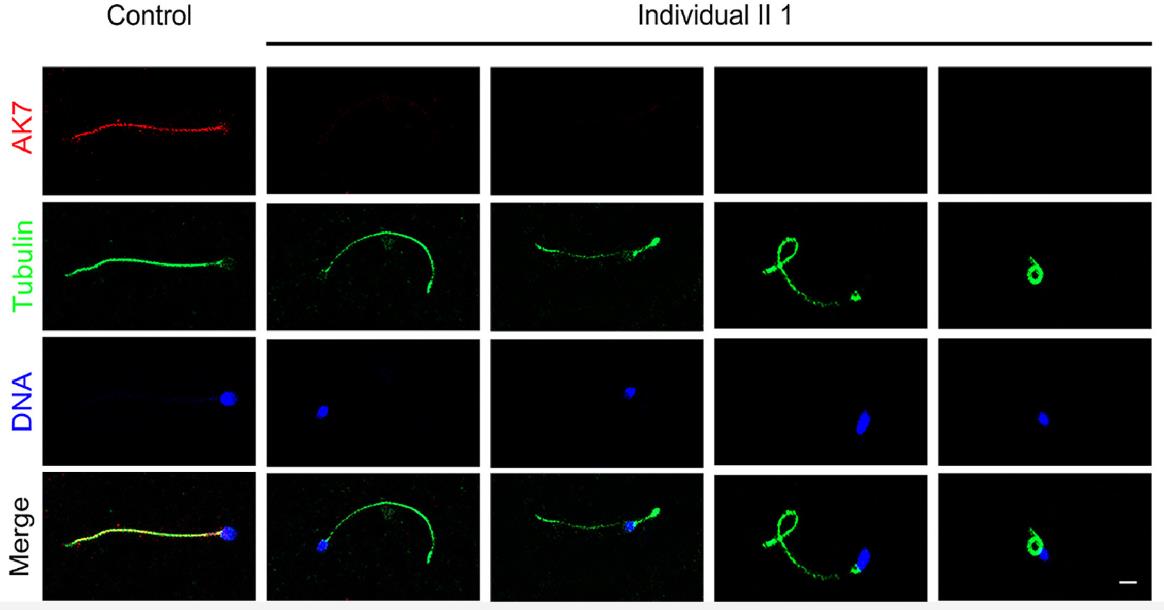
Fig1. Representative images of AK7 immunofluorescence staining for controls and Individual II.
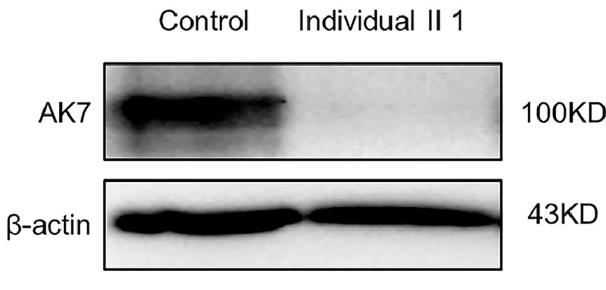
Fig2. AK7 protein was detected by Western blot analysis.
Case Study 2: Yigang Jin, 2024
Clear cell renal cell carcinoma (ccRCC) is a prevalent type of kidney cancer characterized by nonspecific early symptoms, high recurrence, and resistance to conventional therapies like radiotherapy and chemotherapy, necessitating the discovery of new therapeutic targets. Studies using databases such as TCGAportal and UALCAN revealed lower AK7 expression in ccRCC. Experiments showed that AK7 can influence the behavior of ccRCC cells, including their proliferation, invasion, and migration. Analysis with tools like CANCERTOOL and Kaplan-Meier plotter indicated that AK7 expression correlates with patient overall survival (OS), possibly due to its inverse relationship with CD8+ T cell presence, suggesting that patients with low AK7 might respond poorly to immunotherapy. Animal studies demonstrated that increasing AK7 expression could improve the efficacy of PD1 blockade in ccRCC.
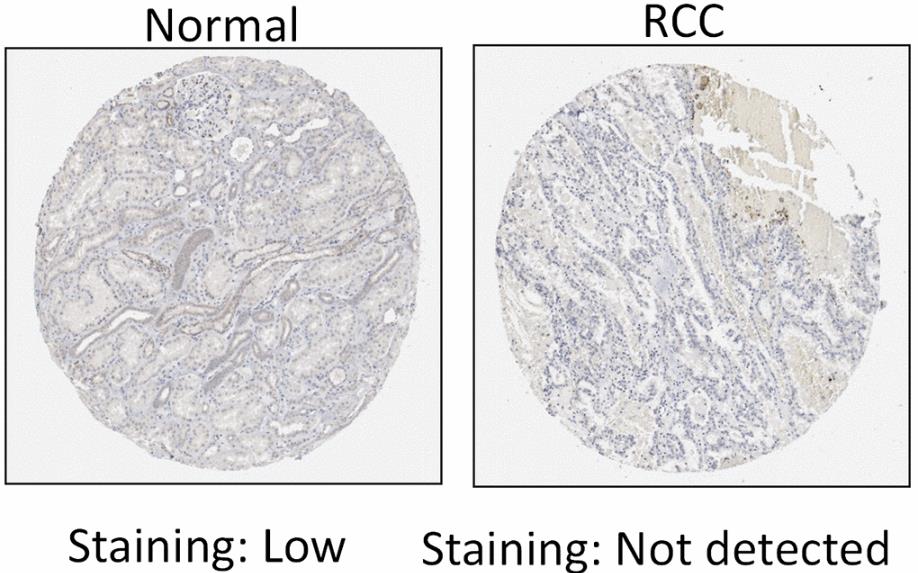
Fig3. Expression of AK7 in normal renal tissues and ccRCC tissues.
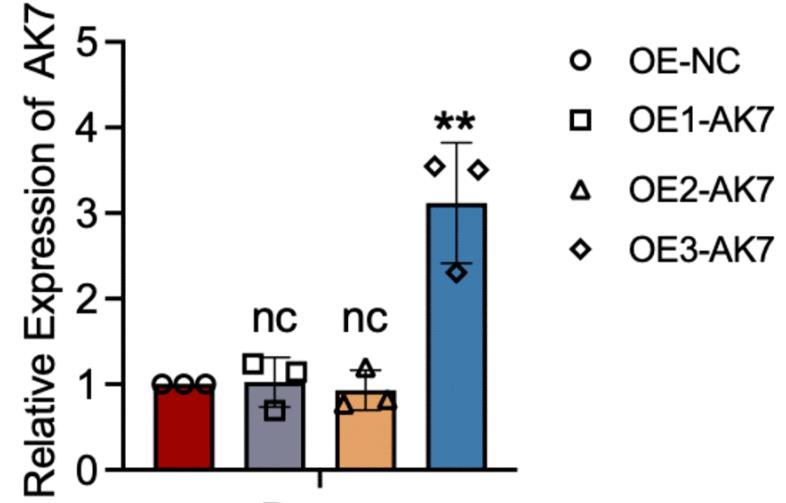
Fig4. qPCR of three lentiviruses designed to overexpress AK7 expression in RENCA cell lines.
Quality Guarantee
High Purity
.jpg)
Fig1. SDS-PAGE (AK7-394H)
.
.jpg)
Fig2. SDS-PAGE (AK7-332H)
Involved Pathway
AK7 involved in several pathways and played different roles in them. We selected most pathways AK7 participated on our site, such as Biosynthesis of antibiotics,Metabolic pathways,Metabolism, which may be useful for your reference. Also, other proteins which involved in the same pathway with AK7 were listed below. Creative BioMart supplied nearly all the proteins listed, you can search them on our site.
| Pathway Name | Pathway Related Protein |
|---|---|
| Metabolism | GDF1,OAZ3,SULT1C2,PTPMT1,SCO1,CKB,DBH,MTF1,DAO,GSTK1 |
| Purine metabolism | PDE11A,AK7B,Adcy4,URAD,HPRT1,NTPCR,NUDT16,NME3,NT5C2,PRIM1 |
| Metabolism of nucleotides | DGUOK,ADA,ADK,NUDT5,TM9SF1,GRX2,DHODH,ITPA,DPYS,NUDT16 |
| Synthesis and interconversion of nucleotide di- and triphosphates | GLRX,AK7A,GRX2,DTYMK,AK8 |
| purine nucleotides de novo biosynthesis | AK8,ATP5S,ADSSL1 |
| Biosynthesis of antibiotics | EHHADH,AGXT,ANI_1_2390104,LDHAL6B,CYP51A1,LDHAL6A,GLYCTK,SDS,CMBL,ADH5 |
| Metabolic pathways | MTMR1A,ADKA,RRM2,TRIT1,AGK,FUT3,CMBL,GART,POLR2K,STT3B |
| adenosine ribonucleotides de novo biosynthesis | ADSSL1,ATP5L,AK8,ATP5S,ADSS |
Protein Function
AK7 has several biochemical functions, for example, ATP binding,adenylate kinase activity,cytidylate kinase activity. Some of the functions are cooperated with other proteins, some of the functions could acted by AK7 itself. We selected most functions AK7 had, and list some proteins which have the same functions with AK7. You can find most of the proteins on our site.
| Function | Related Protein |
|---|---|
| cytidylate kinase activity | CMPK2,CMPK1,AK8,CMPK |
| ATP binding | DDR2,NLRP4B,AK7B,RAF1B,ALPK1,CARS,NLRC3,RYK,ASS1,DHX36 |
| nucleoside diphosphate kinase activity | AK4,AK9,CMPK2,CMPK,NME2B.1,NME3,NME9,NME2B.2,NME2,TXNDC3 |
| adenylate kinase activity | AK1,AK5,AK2,AK4,AK8 |
Interacting Protein
AK7 has direct interactions with proteins and molecules. Those interactions were detected by several methods such as yeast two hybrid, co-IP, pull-down and so on. We selected proteins and molecules interacted with AK7 here. Most of them are supplied by our site. Hope this information will be useful for your research of AK7.
ZC3H14;GPKOW;MUC13;TNPO3
Resources
Related Services
Related Products
References
- Ota, T; Aoki-Ota, M; et al. Autoreactive B-cell elimination by pathogenic IgG specific for the same antigen: implications for peripheral tolerance. INTERNATIONAL IMMUNOLOGY 20:1351-1360(2008).
- Ishii, K; Harada, R; et al. In vitro keratinocyte dissociation assay for evaluation of the pathogenicity of anti-desmoglein 3 IgG autoantibodies in pemphigus vulgaris. JOURNAL OF INVESTIGATIVE DERMATOLOGY 124:939-946(2005).


